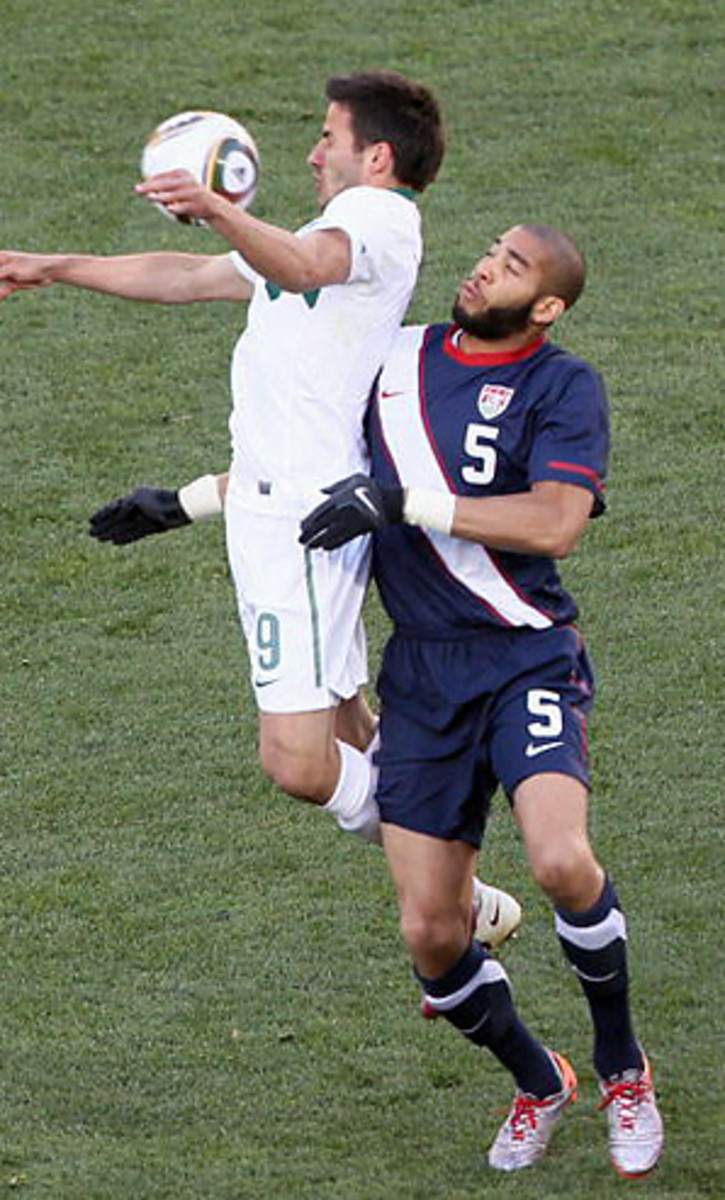
Adjustments the key to U.S. rally
JOHANNESBURG -- So much went right for the United States after intermission in Friday's 2-2 tie with Slovenia in terms of reaching deep, playing with real purpose and refusing to go meekly when things looked so bleak. The reward for a memorable comeback is continued relevancy in the tournament, for a loss at the buzzing Ellis Park would surely have spelled knockout-round doom.
But how did it get to that point? Again? How does the United States manage, time and again, to put itself behind the 8 ball?
Critics of Bob Bradley frequently lament his conservative choices, although he did shake up the order lately with some of those surprise roster choices on his final 23. Similarly, he took a bold step in making one change Friday from the lineup that had stood fast against England six days earlier.
Out came Ricardo Clark and in came Jose Torres, who may be the best U.S. passer this side of Landon Donovan. He's certainly one of the better technicians on the ball, calmly retaining possession more often than not. So Bradley gave the young Texan a World Cup debut -- and it blew up in the coach's face.
At one point, even the reasonable Donovan appeared to get frustrated with Torres. The U.S. veteran gave Torres a little attention-getting shove, later explaining what he said:
"I think I wanted him to give me the ball, and I let him know," Donovan said.
Torres was less than a non-factor. Not only did he fail to make a single penetrating pass, but he also was overly guilty of choosing the lateral or backward option with the ball and at least partially at fault on the first Slovenian goal. Bradley said afterward that Donovan or Torres (or both) probably should have stepped into the hole as Michael Bradley challenged a ball at about 30 yards.
Bradley said all along that the early minutes would be a tactical face-off, with teams holding their lines and keeping everything reliably compact. So what happened there?
One explanation is Oguchi Onyewu's second match of dubious positioning and reaction. He's been in a bad spot for all three goals scored against the United States at South Africa 2010, and if the U.S. can't move into elimination play, Bradley's gamble on Onyewu will probably be a major reason.
Robbie Findley was the other selection who failed to produce, never really threatening the Slovenian back line with the speed that ostensibly earned him a surprise roster spot. He'll miss the next match after collecting a second yellow card in the tournament, so Bradley will have no choice but to make a change. Even if the United States advances, Bradley seems unlikely to go the Findley route again, at least not as a starter.
Bradley's halftime adjustments proved far more prescient. Maurice Edu, in his World Cup debut, stabilized the center in place of Torres, who may not be seen again. That gave Michael Bradley the comfort to range forward more frequently -- something that proved massive in the late equalizer.
Bradley's choice to deploy Benny Feilhaber as more or less a left winger after the break also seemed to bother the Slovenian's typically rock-solid defensive organization. Feilhaber didn't do much there, but his presence unhinged the Eastern Europeans, according to coach Matjak Kek.
"They had four forwards and we had a lot of space open at the very front, and of course, my players were losing a lot of energy," he said. He mentioned more than once the American players' speed and physical presence as other reasons his team became drained.
Tactically, Bradley's 4-4-2 became a 3-3-1-3, with Clint Dempsey operating behind the strikers as his side pressed for the equalizer. Once Michael Bradley hammered his important goal, Edu dropped into center back while Feilhaber found comfort in partnering with the coach's son in the middle of the 4-4-2.
"We were tentative at first, we sat too deep, which caused us problems," Donovan said. "At that point we had no choice but to push the game. It's easy in hindsight to say, 'Why didn't we start like that?' "
Going forward, Bradley and his staff will need to sort out why, exactly, the U.S. keeps dragging its feet to begin matches. He'll have to replace Findley and, presumably, Torres. And he may even step beyond the usual Bradley M.O., which is to keep everything as predictable as possible, including game-day routines. He was asked if he might think about altering the routine, just to try something different.
"I'm not sure there's anything to change in the pregame or that kind of thing," he said, clearly more pleased about the stirring comeback than disappointed over another sluggish opening.
"Maybe we'll try it, I don't know."





